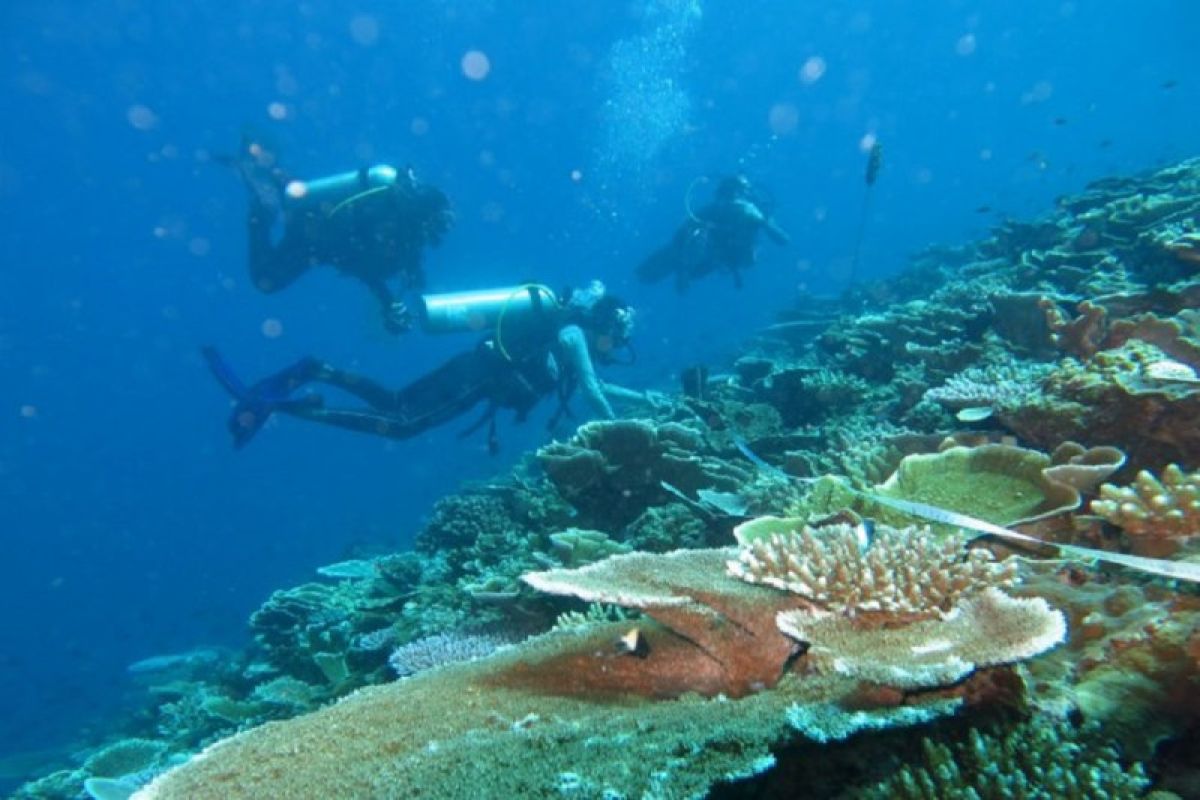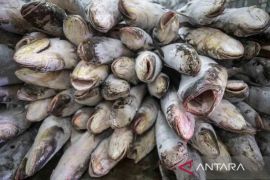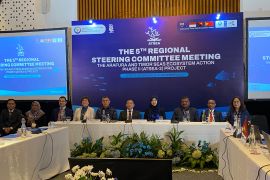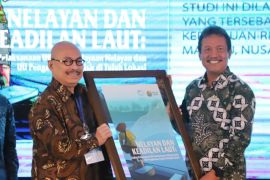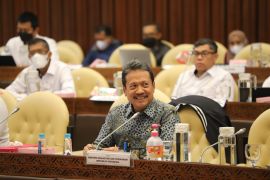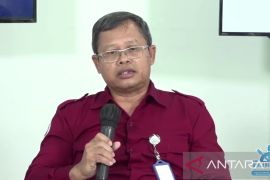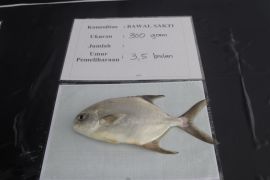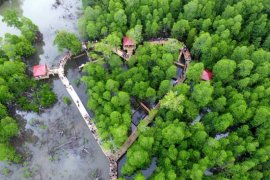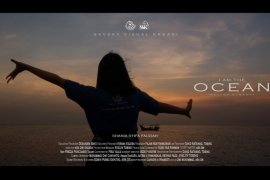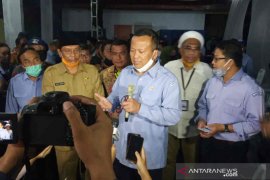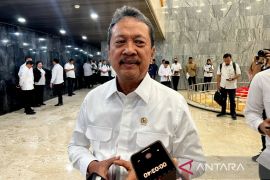Apart from the tourism destinations, other aspects of the maritime sector also hold huge potential to improve the welfare of Indonesian people.
Hence, the government has been striving to optimize the potentials, for instance, by issuing three presidential regulations on interregional marine space zoning plans for the Java Sea, Sulawesi Sea, and Tomini Bay in Sulawesi Island to expedite marine investment.
Determination of the zoning plan is a mandate of Law Number 32 of 2014 on Marine Affairs.
The zoning plan will become a reference for the Maritime Affairs and Fisheries Ministry in issuing the Suitability of Marine Spatial Utilization Activities (KKPRL).
The KKPRL is a prerequisite for business licensing in accordance with Paragraph 1 of Article 37 of Presidential Regulation Number 21 of 2021 regarding implementation of spatial planning.
After the issuance of the three regulations, the Directorate General of Marine Spatial Management of the ministry will establish effective, competitive, and eco-friendly marine growth centers in the three areas.
Earlier, the government had also stipulated the Presidential Regulation Number 83 of 2020 on the Makassar Strait Interregional Zoning Plan.
Hence, four presidential regulations regulate the zoning plans of four interregional marine areas in Indonesia.
However, zoning plans had yet to be regulated for 16 interregional marine areas comprising straits, bays, and trans-provincial seas.
Acting Director General of Marine Spatial Management of the ministry Pamuji Lestari stated that the directorate general will also encourage investment in coastal areas and small islands to increase the non-tax state revenue (PNBP) from the sector.
Lestari noted that the directorate general’s PNBP in 2021 had reached more than Rp27 billion, an increase of about 400 percent as compared to the PNBP performance of only around Rp6 billion in 2020.
Furthermore, Lestari said her side will coordinate with the Directorate General of Supervision of Marine and Fisheries Resources of the ministry to oversee the administration of marine business licenses to optimize the achievement of revenue.
Related news: Perpres on marine space zoning plans expedites investment: Minister
Related news: Investment in marine, fisheries sector reached Rp6.02 trillion in 2021
Ecological-economic balance
In addition to issuing the regulations and intensifying internal cooperation, the Maritime Affairs and Fisheries Ministry collaborates with several external parties, such as Seychelles.
Cooperation with the island country aims to establish strategic cooperation and investment based on a blue economy.
Indonesian Maritime Affairs and Fisheries Minister Sakti Wahyu Trenggono said Seychelles is a nation that has become a pioneer in blue economy, as the African nation has developed a blue bond sovereign program to improve its marine tourism.
According to the official site of World Bank, blue bond is a debt instrument issued to increase investment for beneficial and eco-friendly marine and ocean-based projects.
Trenggono has assessed that the cooperation is in line with the ministry’s endeavor to create an ecological and economic balance through technological innovation.
Meanwhile, Special Envoy of the President of the Seychelles for ASEAN, Nico Barito, stated that as an archipelagic nation, his country is highly concerned about the environmental issue, especially regarding the protection of marine life.
Hence, Seychelles has proposed to collaborate with Indonesia to develop sustainable marine tourism, responsible fisheries, biodiversity conservation, and islands monitoring to bolster its economic growth as well as to strengthen environmental conservation.
Meanwhile, Indonesia has offered to cooperate on the establishment of world-class international hotel networks at several tourism destinations, such as in Maratua Island in Berau District, East Kalimantan Province.
Indonesia also extended collaborations for attracting foreign investment through Indonesia’s blue bonds, advancing Indonesian marine and fisheries human resources, as well as drafting training modules for Indonesia’s marine tourism destination management.
Acting Head of the ministry's Center for Maritime Affairs and Fisheries Research and Human Resources, Kusdiantoro, stated that through a joint investment and human resource development cooperation, Indonesia had committed to synergizing with Seychelles in developing Indonesia’s blue economy.
The pilot project of the cooperation will be the establishment of environmental-based marine tourism.
The Seychelles government's success in implementing blue economy-based marine tourism is expected to set an example for the Indonesian younger generation to optimize its own marine tourism potentials.
Related news: Bappenas studies plan to offer blue bonds next year
Related news: Making Indonesia's blue economy concept harmonious with G20 vision
OSS Access
Speaking in connection with domestic investment, National Coordinator of Destructive Fishing Watch (DFW) Indonesia Moh Abdi Suhufan expects various relevant agencies to help fisheries business actors in various regions to access the web-based service for issuing business license Online Single Submission (OSS).
They often encountered technical difficulties while creating an OSS account and making requisite submissions for meeting the administrative requirements.
Hence, Suhufan has urged the Maritime Affairs and Fisheries Ministry, Investment Ministry, as well as local governments to evaluate and improve the implementation of OSS in the capture fisheries sub-sector.
Investment in the coastal areas and small islands is one of the government's alternative attempts to bolster its PNBP achievement.
However, the investment must be carried out according to the determined spatial planning, space allocation, and utilization zoning.
Thus, Suhufan expects that business investment in various small islands and coastal areas will not hinder the local fishermen's activities. In its place, it must prioritize local fishermen, communities, and indigenous peoples to utilize the coastal and marine areas around their villages.
He stated that several investment activities were disrupting the activities of local fishermen, such as mining activities in Bangka Island in Bangka Belitung Islands, North Minahasa District in North Sulawesi, and Talaud Island in North Sulawesi.
In fact, several regulations have been issued as a precautionary measure against the problems, he noted.
However, implementation of the rules has not been synchronized among the related sectors that include the mining, forestry, and marine sectors.
Likewise, Daily Chairman of the Indonesian Traditional Fishers Association (KNTI) Dani Setiawan emphasized that the coastal development concept implemented by the government should not solely focus on improving PNBP's achievements through marine and fishery investments.
According to Setiawan, investment activities that only pursue PNBP targets were found to likely be causal to social problems and exploitation and destruction of ecosystems.
In addition, PNBP-targeted business often lacks community participation during its planning to implementation processes.
Coastal communities should no longer only be the objects of development or an investment plan but instead be the active subjects of the plan.
Active involvement of the community along with the application of the blue economy concept, which ably balances the ecological and economic aspects, is believed to be able to create sustainable marine investments for future generations of Indonesia.
Related news: Maritime tourism development should be synergized with locals: Expert
Related news: BMKG stresses on critical infrastructure development in coastal areas
Editor: Suharto
Copyright © ANTARA 2022
